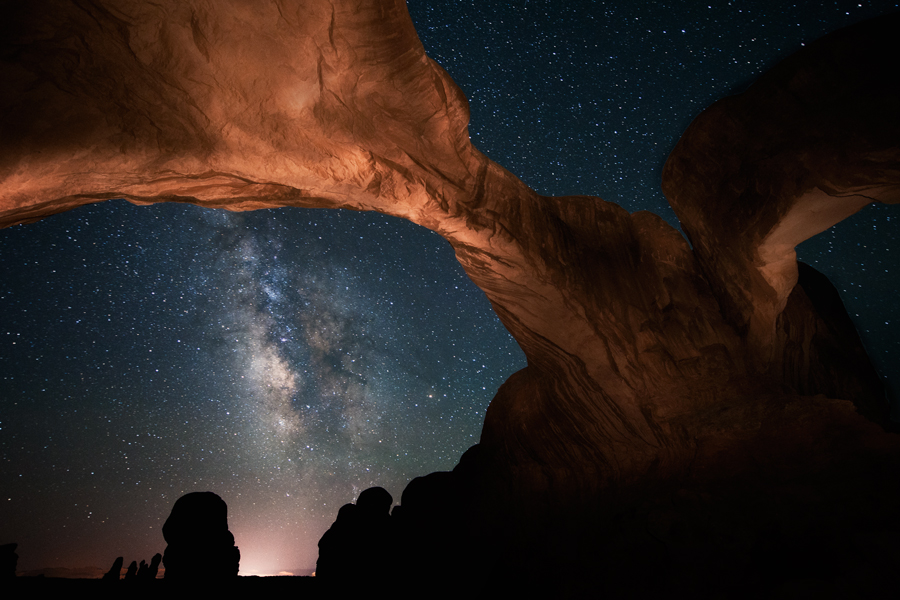
Posted on 05/23/2011 9:23:11 PM PDT by SunkenCiv
[Credit & Copyright: Brad Goldpaint (Goldpaint Photography)] Explanation: How many arches can you count in the above image? If you count both spans of the Double Arch in the Arches National Park in Utah, USA, then two. But since the above image was taken during a clear dark night, it caught a photogenic third arch far in the distance -- that of the overreaching Milky Way Galaxy. Because we are situated in the midst of the spiral Milky Way Galaxy, the band of the central disk appears all around us. The sandstone arches of the Double Arch were formed from the erosion of falling water. The larger arch rises over 30 meters above the surrounding salt bed and spans close to 50 meters across. The dark silhouettes across the image bottom are sandstone monoliths left over from silt-filled crevices in an evaporated 300 million year old salty sea. A dim flow created by light pollution from Moab, Utah can also be seen in the distance.
(Excerpt) Read more at apod.nasa.gov ...
I love it....so facinating....
And as you can see, we’re in a backwater spiral arm (”...the Orion arm is not a major spiral arm, but only an enhancement of stars and gas between the Sagittarius and Perseus arms”).
I’ve never heard that before....oh well....
"Send them McRibs, from that [bleep]ing McRib wave..."
They’ve moved some. :’)
Hundreds of Billions of miles at blinding speeds beyond comprehension.
BUT.... from our perspective...
Well, it's like having beachfront property. You get a nice view, and it's way away from the crowded (and very hot) inner city.
Just like Hoboken!
Away from the (very hot and possibly containing a black hole) inner city is always a plus.
Actually, the stars are just holes in the celestial canopy. ;’)
Disclaimer: Opinions posted on Free Republic are those of the individual posters and do not necessarily represent the opinion of Free Republic or its management. All materials posted herein are protected by copyright law and the exemption for fair use of copyrighted works.